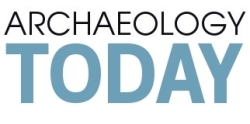
March 9th, 2014
Finding Answers to New Mysteries at Cahokia
During the summer of 2014, archaeologists will be investigating the remains of a 900-year-old Native American ceremonial center site located in Illinois. Known as Emerald Mound in Lebanon, IL, about 25 miles east of the Cahokia mounds, the site is thought to be culturally associated with the well-known Cahokia mounds of the Pre-Columbian Mississipian culture, an advanced society that spread across the present-day Southeastern United States centuries before European contact. (Popular Archaeology)
Archaeologists found bones of a Stone Age child and an adult in tiny cave
Archaeologists at IT Sligo have found bones of a Stone Age child and an adult in a tiny cave high on Knocknarea mountain near the town. Radiocarbon dating has shown that they are some 5,500 years old, which makes them among the earliest human bones found in the county. The find represents important fresh evidence of Knocknarea’s Neolithic (Stone Age) links and a prehistoric practice known as “excarnation”. Researchers discovered a total of 13 small bones and bone fragments in an almost inaccessible cave last November. (Irish Mirror)
Archaeologists will soon start dig at the Fountain of Youth Archaeological Park
Another page may be added to St. Augustine’s historical legacy this spring once archaeologists explore an uncharted area of the nation’s oldest colony. Archaeologists start their dig at the Fountain of Youth Archaeological Park in a week. The site is regularly excavated by researchers who piece together the lives of America’s earliest Spanish settlers and the Native Americans who lived nearby. (The Saint Augustine Record)
Archaeologists find 3,000-year-old graves in Cusco, Peru
Excavators working in the city of Cusco have discovered a burial site containing five individuals from the Marcavalle culture, a pre-Inca society. Andina news agency reports that the skeletal remains date back to around 1,000 BC. The burial site, which contained two double graves and one single grave, was found on land owned by a Cusco center for juvenile rehabilitation. Three of the individuals found at the site were adults at the time of their deaths, while one was a child and the other an adolescent. (Peru this Week)
Ancient secrets of the sand unveiled
A DOG walker took a step back in time during his routine stroll, finding footprints thought to be 7,000 years old. Archaeologist Barry Mead was walking his dog Peedie on the beach near his Cresswell home when he came across a newly-exposed inter-tidal peat bed. The find, at the southern end of Druridge Bay, included footprints dating back thousands of years, which are the first of their kind to be found at that part of the beach. (Morpeth Herald)
Executed Vikings were inexperienced raiders who oozed smelly pus, say archaeologists
The bony discovery of 50 young male skeletons, decapitated and lumped in an old quarry pit before being found by diggers on an Olympic relief road in Weymouth five years ago, became an even more gripping story following scientific examinations revealing that this mass grave carried executed Vikings. David Score, of excavators Oxford Archaeology, called the test results “thrilling”, while Angus Campbell, the then-leader of Dorset County Council who is now the county’s Lord Lieutenant, admitted organisers “never would have dreamed of finding a Viking war grave.” (Culture24)
Great Gouda! World’s oldest cheese found – on mummies
Vintage Gouda may be aged for five years, some cheddar for a decade. They’re both under-ripe youngsters compared with yellowish clumps – found on the necks and chests of Chinese mummies – now revealed to be the world’s oldest cheese. The Chinese cheese dates back as early as 1615 BC, making it by far the most ancient ever discovered. Thanks to the quick decay of most dairy products, there isn’t even a runner-up. (USA Today)
Bronze Age rock art uncovered in Brecon Beacons
Rare, prehistoric rock art which could be more than 4,000 years old has been discovered in the Brecon Beacons. The Bronze Age discovery was made late last year by national park geologist Alan Bowring. Experts claim the stone probably served as a way marker for farming communities. Similar stones have been found in other parts of Britain but they are thought to be rare in mid Wales. (BBC News)
Statue of pharaoh’s daughter unearthed in Egypt
A statue of the daughter of King Amenhotep III, grandfather of Tutankhamen and ruler of Egypt around 3,350 years ago, has been unearthed by a team of Egyptian and European archaeologists. The statue of Princess Iset was discovered at the temple of her pharaoh father on the western bank of the Nile in the southern city of Luxor, the Egyptian antiquities ministry said on Friday. (Reuters)



